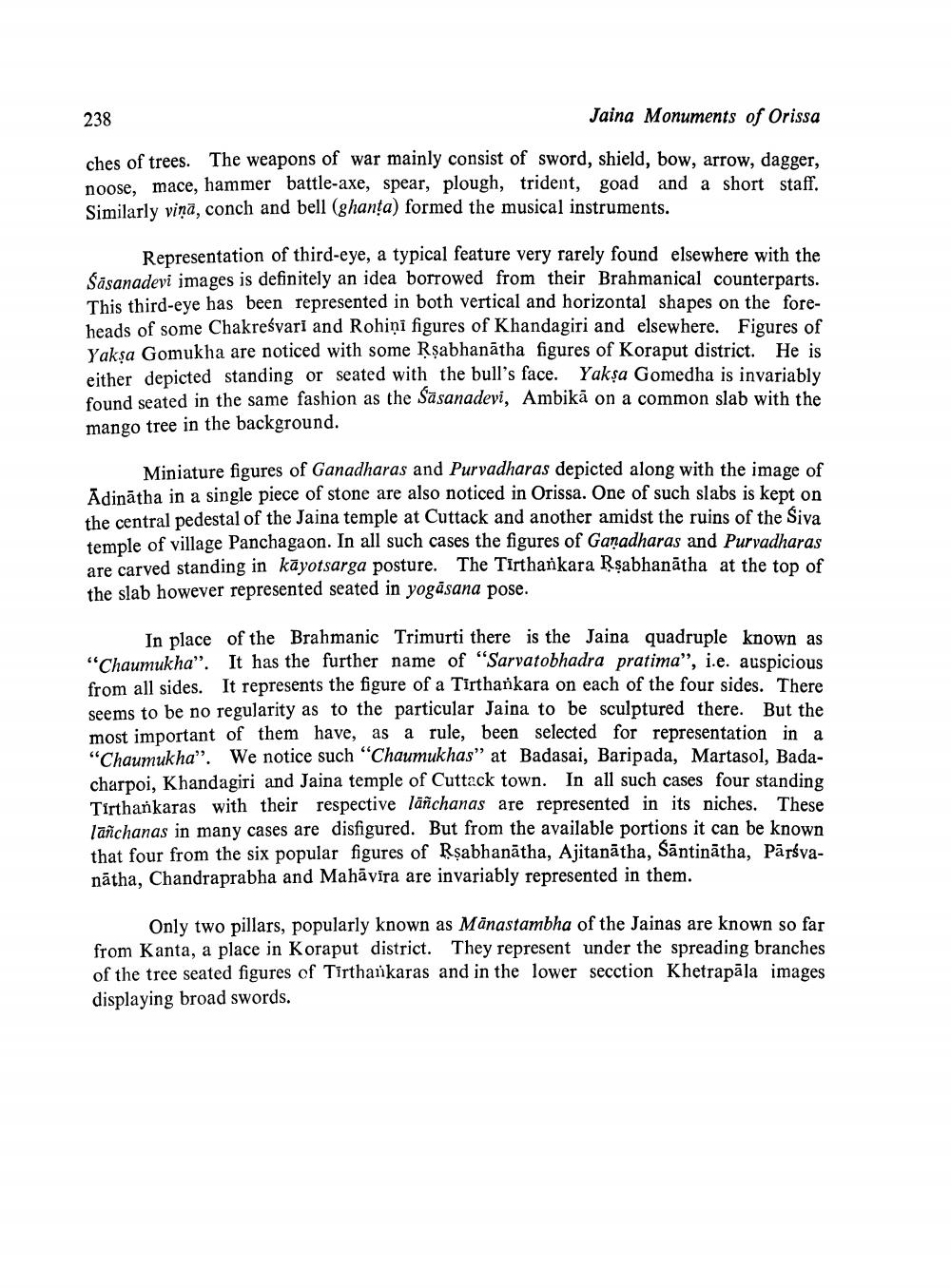________________
238
Jaina Monuments of Orissa
ches of trees. The weapons of war mainly consist of sword, shield, bow, arrow, dagger, noose, mace, hammer battle-axe, spear, plough, trident, goad and a short staff. Similarly vina, conch and bell (ghanta) formed the musical instruments.
Representation of third-eye, a typical feature very rarely found elsewhere with the Sasanadevi images is definitely an idea borrowed from their Brahmanical counterparts. This third-eye has been represented in both vertical and horizontal shapes on the foreheads of some Chakreśvari and Rohiņi figures of Khandagiri and elsewhere. Figures of Yaksa Gomukha are noticed with some Rşabhanātha figures of Koraput district. He is either depicted standing or seated with the bull's face. Yakşa Gomedha is invariably found seated in the same fashion as the Sasanadevi, Ambikā on a common slab with the mango tree in the background.
Miniature figures of Ganadharas and Purvadharas depicted along with the image of Adinātha in a single piece of stone are also noticed in Orissa. One of such slabs is kept on the central pedestal of the Jaina temple at Cuttack and another amidst the ruins of the Siva temple of village Panchagaon. In all such cases the figures of Ganadharas and Purvadharas are carved standing in kāyotsarga posture. The Tirthankara Rşabhanātha at the top of the slab however represented seated in yogasana pose.
In place of the Brahmanic Trimurti there is the Jaina quadruple known as "Chaumukha”. It has the further name of “Sarvatobhadra pratima", i.e. auspicious from all sides. It represents the figure of a Tirthankara on each of the four sides. There seems to be no regularity as to the particular Jaina to be sculptured there. But the most important of them have, as a rule, been selected for representation in a "Chaumukha”. We notice such "Chaumukhas" at Badasai, Baripada, Martasol, Badacharpoi, Khandagiri and Jaina temple of Cuttack town. In all such cases four standing Tirthankaras with their respective lāñchanas are represented in its niches. These lañchanas in many cases are disfigured. But from the available portions it can be known that four from the six popular figures of Rşabhanātha, Ajitanātha, Sāntinātha, Pārsvanātha, Chandraprabha and Mahāvīra are invariably represented in them.
Only two pillars, popularly known as Mānastambha of the Jainas are known so far from Kanta, a place in Koraput district. They represent under the spreading branches of the tree seated figures of Tirthankaras and in the lower secction Khetrapāla images displaying broad swords.




